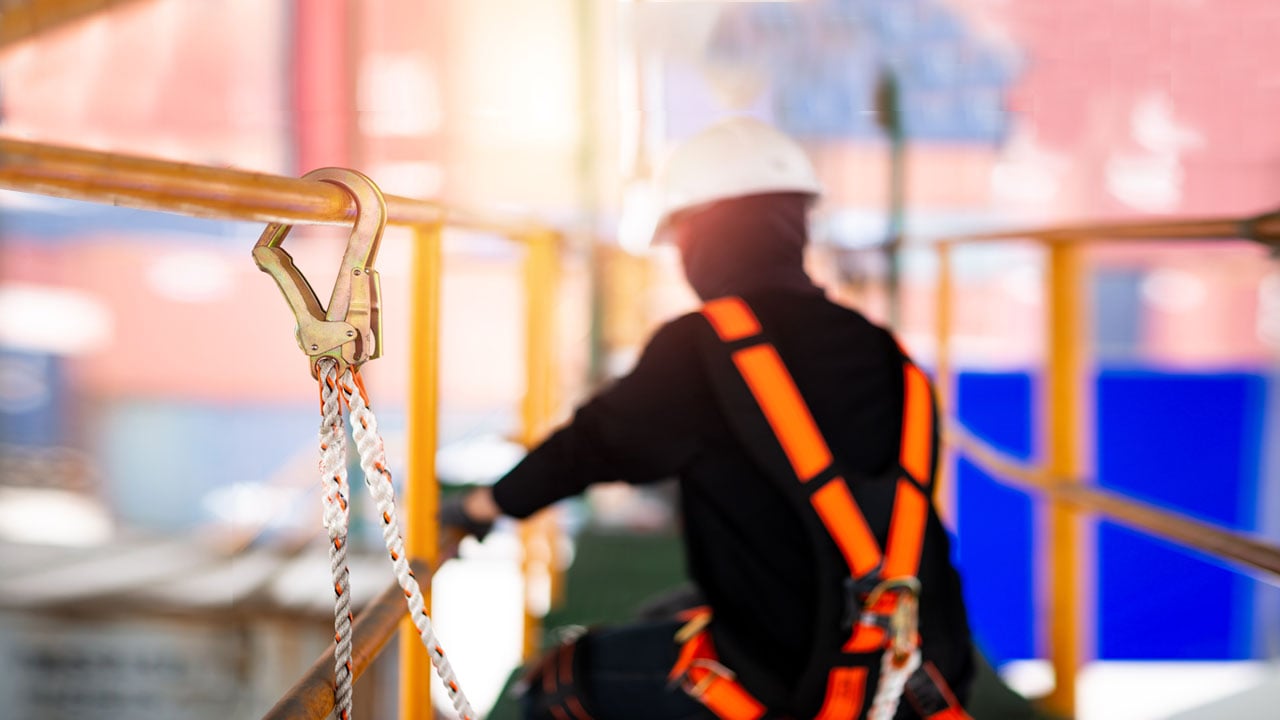When someone falls, someone gets hurt—and the risk is doubled if you’re on top of a roof. Even if you fall on a roof (as opposed to falling from the roof to ground level or a lower-level roof structure), you can still be in considerable danger. That’s because a roof may contain hazards that you wouldn’t want to impact with your body, such as pipe supports, live electrical equipment, or rusted metal. There’s even a danger of falling through a roof if you happen to be standing near a weakened area or a skylight. In other words, rooftop fall protection is more important than most may think.
With so many hazards in play, it’s no wonder that roofing accidents make up over one-third of all fatalities in the construction industry. Since you believe in worker safety—plus avoiding fines and bad publicity—it’s likely that you are interested in the guidelines and techniques that make up rooftop fall protection and prevention. Here are the top four ways to get started:
1. Study New OSHA Guidelines
In 2017, OSHA unveiled new fall protection guidelines that affect 112 million workers. If you employ workers or contractors to work on your roof, then you should also note that these new regulations are specifically targeted at those who work above ground level. Here are a few highlights from the new regulations:
- Anyone working at a distance less than six feet away from a roof edge will now require a fall protection system such as netting, a guardrail, or a personal fall arrest system.
- Work that is between 6 and 15 feet away from a roof edge may not require a guardrail but does require a designated work area and a warning line six feet away from the drop.
- Guardrails must be provided for all work that takes place at a height greater than 42 inches.
- Fixed ladders over 24 feet now require safety systems.
- Employers need to assess their safety systems, identify fall hazards, and make sure that workers know how to use the protections that are available. They also need to document every assessment.
OSHA previously didn’t specify a safe distance when it came to work performed near a roof edge. That means that plenty of roofs that previously may not have had protective systems now need to get them set up.
2. Rely on a Small Number of Well-Trained Personnel
If there’s one thing that’s clear from the new OSHA guidelines, it’s that anyone working on top of a roof needs to be extremely cautious. The more people you have working on top of a roof, the more danger they’re in. In addition to installing compliant safety systems, your safest course of action is to minimize the number of people who are able to access your rooftop.
First of all, this means closing off your roof with locked doors—no one should be able to go up there on casual business. Access should be permitted only to a small number of workers. Each worker should go through a training course, become familiar with the rooftop safety systems available, and periodically re-certify their knowledge. Lastly, these individuals should be required to keep logs of their time on top of the roof, noting when they came up, what they did and saw, and when they came down.
3. Install Roof Access Walkways
Your roof will eventually need maintenance and inspection from human eyes and hands. That’s where roof access walkways come into play. These structures provide an easy way for facility managers to provide safety structures that fulfill the OSHA requirements for rooftop fall protection. In particular, these systems:
- Provide a guardrail system with non-penetration fasteners that sits within six feet of the roof edge e.g. the danger zone outlined by OSHA.
- Provide a safe passageway over pipe trays, cable runs, and rooftop equipment with handrails standardized for any elevation over 48”.
- Provide a layer of protection that is easy to use, easy to install, and easy to maintain.
PHP Systems/Design provides a wide range of roof access walkways designed to let workers access, inspect, and maintain rooftops while adhering to the safety guidelines laid out by OHSA. Our walkways, pipe supports, and crossovers are designed to add an extra layer of safety to one of the most dangerous parts of your building, all while preventing damage due to excess weight and penetration. Although the top of your roof may never be absolutely safe, our systems will help make it as safe as possible. Contact us today to learn more!




